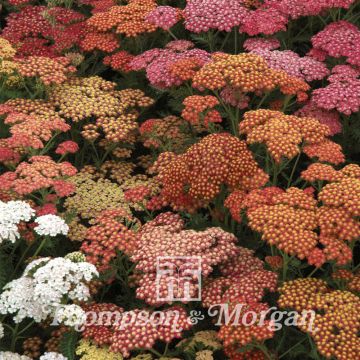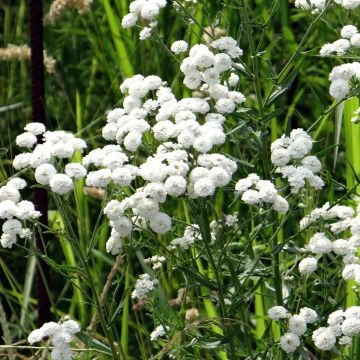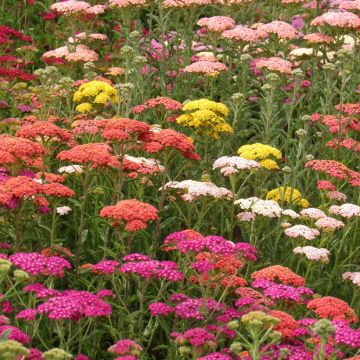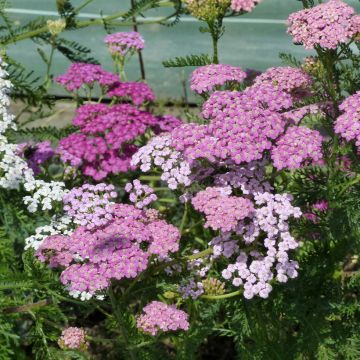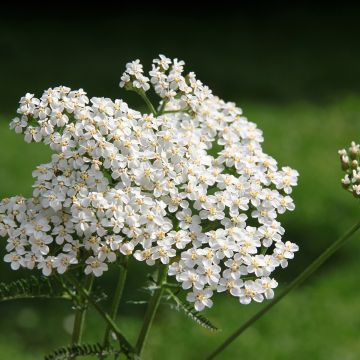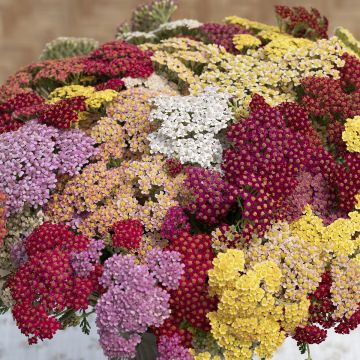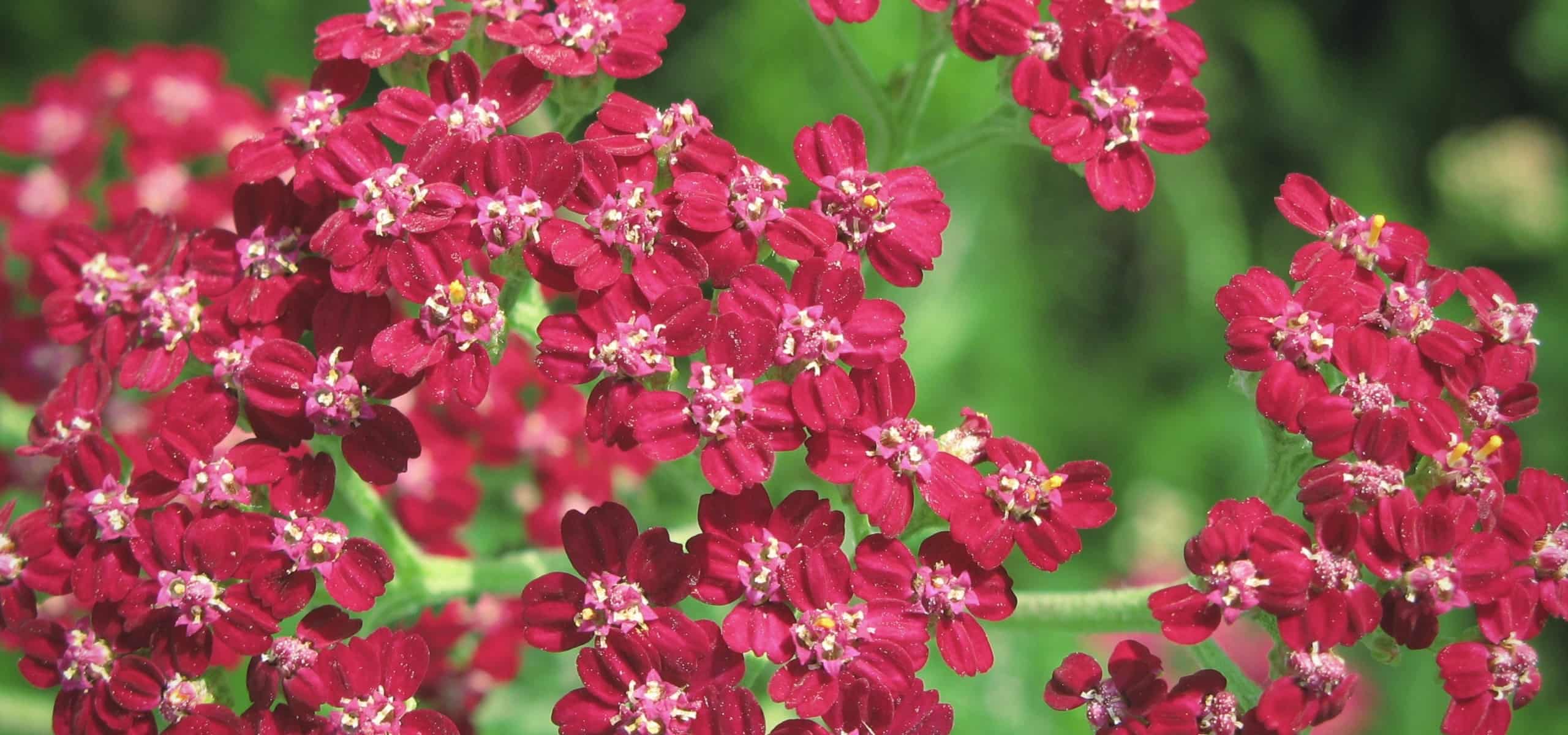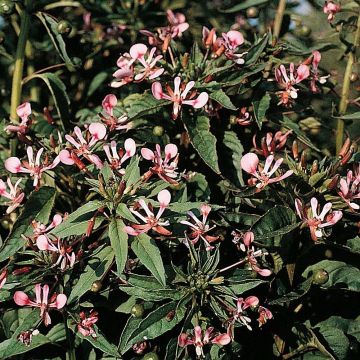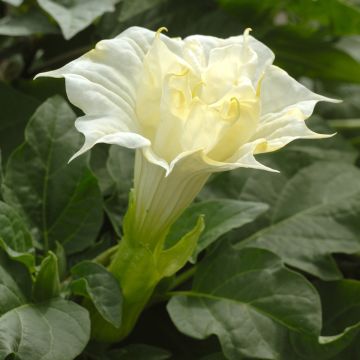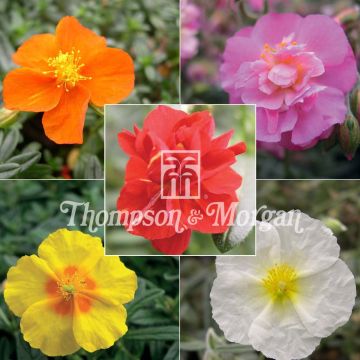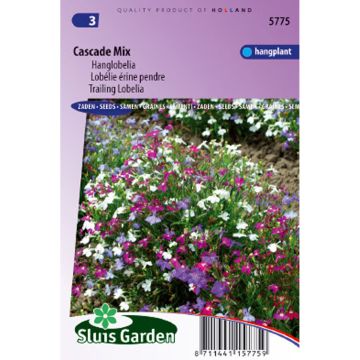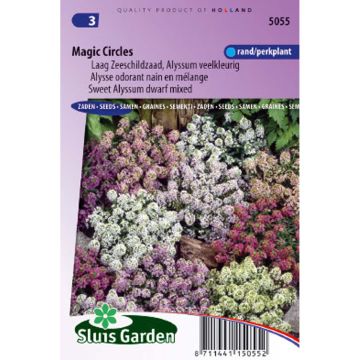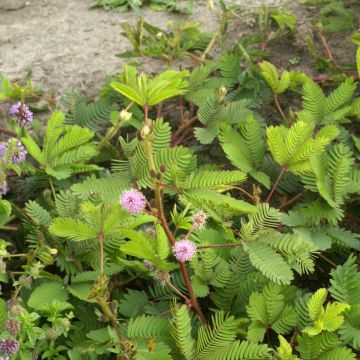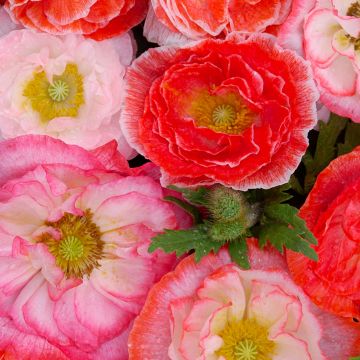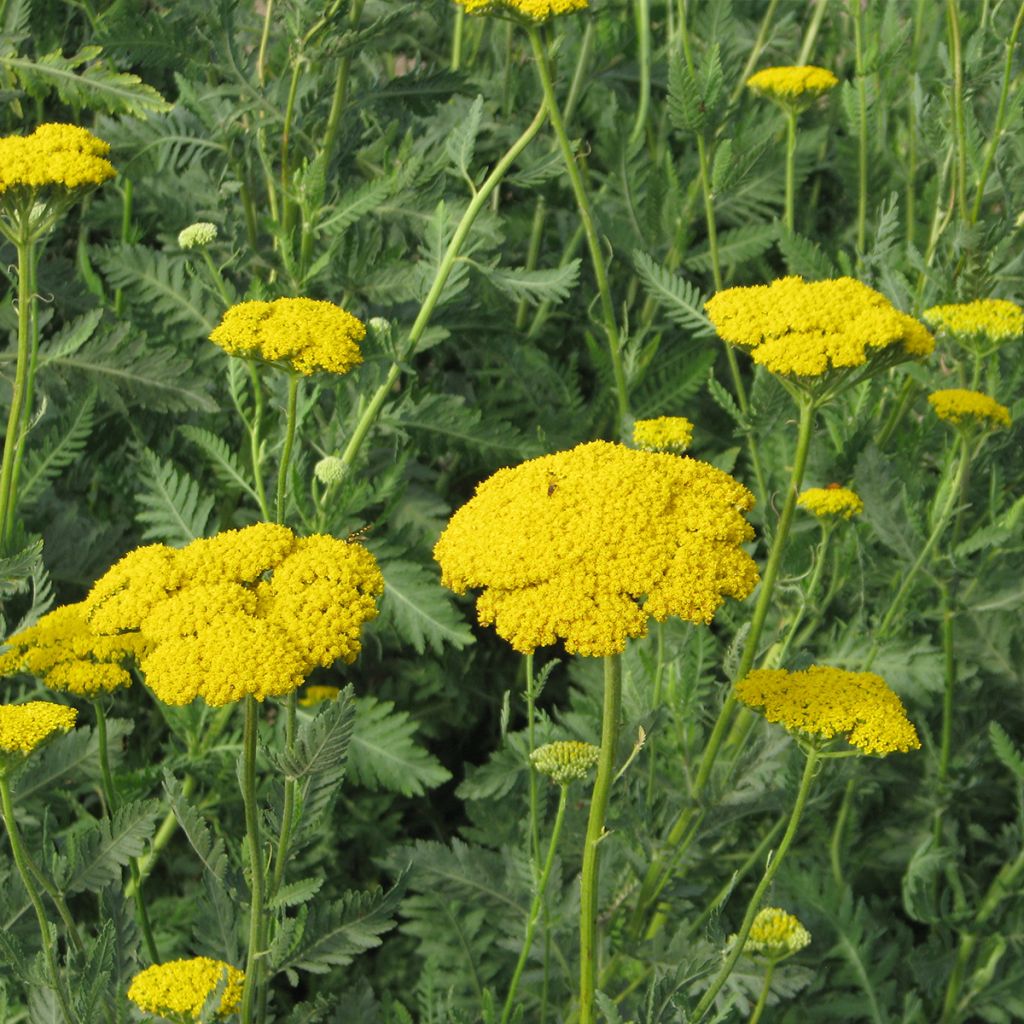

Graines d'Achillée filipendulina Cloth of Gold
Achillea fillipendulina Cloth of Gold - Yarrow
Achillea fillipendulina Cloth of Gold
Yarrow, Gold Yarrow
Special offer!
Receive a €20 voucher for any order over €90 (excluding delivery costs, credit notes, and plastic-free options)!
1- Add your favorite plants to your cart.
2- Once you have reached €90, confirm your order (you can even choose the delivery date!).
3- As soon as your order is shipped, you will receive an email containing your voucher code, valid for 3 months (90 days).
Your voucher is unique and can only be used once, for any order with a minimum value of €20, excluding delivery costs.
Can be combined with other current offers, non-divisible and non-refundable.
Home or relay delivery (depending on size and destination)
Schedule delivery date,
and select date in basket
This plant carries a 6 months recovery warranty
More information
We guarantee the quality of our plants for a full growing cycle, and will replace at our expense any plant that fails to recover under normal climatic and planting conditions.
Does this plant fit my garden?
Set up your Plantfit profile →
Description
Achillea filipendulina Cloth of Gold is an impressive yarrow, a large relative of the common yarrow, with deep golden yellow summer flowers. As summer reaches its peak, its large slightly bell-shaped flower heads tower over a beautiful clump of light green and fresh leaves, defying the heat. Vigorous, evergreen, and hardy, this water-efficient perennial plant is stunning in a wild or drought-tolerant garden. Simply provide it with well-drained, moist, or even dry soil in summer, and a very sunny location. This elegant plant also works well in both dry and fresh flower arrangements.
Achillea filipendulina, also known as Yarrow, is a rhizomatous perennial plant belonging to the aster family. Its distribution area extends over a wide range in central and southwestern Asia (Kazakhstan, Afghanistan, Pakistan, Iran, Iraq, Turkey, Caucasus). This highly adaptable species is also naturalised in Europe and North America.
The 'Cloth of Gold' cultivar quickly reaches a height of 1m (3ft) to 1.20m (4ft) in flower by the second year of cultivation, spreading through its trailing stump over 60cm (24in) and more. The flower is a slightly bell-shaped corymb, measuring 6 to 8cm (2 to 3in) in diameter. The long and highly nectar-rich flowering period lasts from July to September. The flowers are actually complex heads, composed of tiny globular corymbs juxtaposed to each other, giving the whole a lumpy appearance. These heads, which appear at the tops of very rigid stems, are a bright gold yellow, almost 'flashy', turning to golden bronze. The flowers give rise to fruits called achenes. The stem is angular, channelled, and villous. The foliage is semi-evergreen to evergreen, rough and pubescent, aromatic and intensely lobed into fine strips. The leaves are bipinnately lobed, feathery, and fairly light and vibrant green.
All yarrows love the sun and are excellent in terms of hardiness. The 'Cloth of Gold' yarrow will fits well in a wildflower meadow, a large rockery, or on a slope where it will help stabilize and protect against erosion. It pairs well with sun-loving perennials, as well as with red or bright blue flowers found in crocosmias, bellflowers, asters, ground-cover roses, and perennial delphiniums. In dry soil, it can be accompanied by Echinaceas, Verbena Buenos Aires, shrubby salvias, Gaura, Caryopteris, or even 'Valerie Finnis' wormwood and tall thistles. Once established, it is a highly drought-resistant plant, making it a great match for lavender and rosemary in rocky soil. This plant easily attracts aphids, so much so that it is known in organic gardening to prevent or deter other plants from being invaded by insects.
According to Pliny, a Roman naturalist from the first century AD, its name comes from Achilles, a hero from Greek mythology, who used it to heal wounds. Achilles reportedly discovered the healing power of this plant during the Trojan War, when he treated a wound following the advice of Venus.
In fact, the plant has recognised medicinal properties: it is hemostatic, the leaves promote healing, and the flowers have a stimulating, toning, and febrifuge action when concentrated. Its young shoots can be used in omelettes or salads.
Flowering
Foliage
Plant habit
Botanical data
Achillea
fillipendulina
Cloth of Gold
Asteraceae
Yarrow, Gold Yarrow
Cultivar or hybrid
Other Achillea seeds
View all →Planting and care
Sow Achillea Cloth of Gold seeds from February to June or from September to October on the surface of a good compost and cover the seeds with a thin layer of vermiculite compost. Place in a mini-greenhouse at a temperature of 15-24°C (59-75.2°F) or enclose the seed tray in a polyethylene bag until germination, which usually takes 1 to 3 weeks. Keep in light, as this facilitates germination.
When the seedlings are large enough to handle, transplant them into 8 cm (3in) pots and grow them in cooler conditions. When the plants are well developed and the risk of frost has passed, gradually acclimatise the plants to outdoor conditions for 10 to 15 days before planting them outside. Transplant the plants at a distance of 60cm (24in) in well-drained sunny soil. September sowings can be overwintered in a cold frame and be planted outside the following spring.
Plant Achillea Cloth of Gold in any soil, including limestone, dry or moist but well-drained. It even adapts to clay soils, if they are healthy and well amended. It will grow in partial shade but prefers full sun. In cooler climates, planting can be done all year round. In regions with hot and dry summers, it is preferable to plant in September-October so that the plant can establish its roots well during autumn and winter to withstand the following summer. It is best to cut back all vegetation at the end of the season to promote the growth of new shoots in spring.
Sowing period
Intended location
Planting & care advice
This item has not been reviewed yet - be the first to leave a review about it.
Similar products
Haven't found what you were looking for?
Hardiness is the lowest winter temperature a plant can endure without suffering serious damage or even dying. However, hardiness is affected by location (a sheltered area, such as a patio), protection (winter cover) and soil type (hardiness is improved by well-drained soil).

Photo Sharing Terms & Conditions
In order to encourage gardeners to interact and share their experiences, Promesse de fleurs offers various media enabling content to be uploaded onto its Site - in particular via the ‘Photo sharing’ module.
The User agrees to refrain from:
- Posting any content that is illegal, prejudicial, insulting, racist, inciteful to hatred, revisionist, contrary to public decency, that infringes on privacy or on the privacy rights of third parties, in particular the publicity rights of persons and goods, intellectual property rights, or the right to privacy.
- Submitting content on behalf of a third party;
- Impersonate the identity of a third party and/or publish any personal information about a third party;
In general, the User undertakes to refrain from any unethical behaviour.
All Content (in particular text, comments, files, images, photos, videos, creative works, etc.), which may be subject to property or intellectual property rights, image or other private rights, shall remain the property of the User, subject to the limited rights granted by the terms of the licence granted by Promesse de fleurs as stated below. Users are at liberty to publish or not to publish such Content on the Site, notably via the ‘Photo Sharing’ facility, and accept that this Content shall be made public and freely accessible, notably on the Internet.
Users further acknowledge, undertake to have ,and guarantee that they hold all necessary rights and permissions to publish such material on the Site, in particular with regard to the legislation in force pertaining to any privacy, property, intellectual property, image, or contractual rights, or rights of any other nature. By publishing such Content on the Site, Users acknowledge accepting full liability as publishers of the Content within the meaning of the law, and grant Promesse de fleurs, free of charge, an inclusive, worldwide licence for the said Content for the entire duration of its publication, including all reproduction, representation, up/downloading, displaying, performing, transmission, and storage rights.
Users also grant permission for their name to be linked to the Content and accept that this link may not always be made available.
By engaging in posting material, Users consent to their Content becoming automatically accessible on the Internet, in particular on other sites and/or blogs and/or web pages of the Promesse de fleurs site, including in particular social pages and the Promesse de fleurs catalogue.
Users may secure the removal of entrusted content free of charge by issuing a simple request via our contact form.
The flowering period indicated on our website applies to countries and regions located in USDA zone 8 (France, the United Kingdom, Ireland, the Netherlands, etc.)
It will vary according to where you live:
- In zones 9 to 10 (Italy, Spain, Greece, etc.), flowering will occur about 2 to 4 weeks earlier.
- In zones 6 to 7 (Germany, Poland, Slovenia, and lower mountainous regions), flowering will be delayed by 2 to 3 weeks.
- In zone 5 (Central Europe, Scandinavia), blooming will be delayed by 3 to 5 weeks.
In temperate climates, pruning of spring-flowering shrubs (forsythia, spireas, etc.) should be done just after flowering.
Pruning of summer-flowering shrubs (Indian Lilac, Perovskia, etc.) can be done in winter or spring.
In cold regions as well as with frost-sensitive plants, avoid pruning too early when severe frosts may still occur.
The planting period indicated on our website applies to countries and regions located in USDA zone 8 (France, United Kingdom, Ireland, Netherlands).
It will vary according to where you live:
- In Mediterranean zones (Marseille, Madrid, Milan, etc.), autumn and winter are the best planting periods.
- In continental zones (Strasbourg, Munich, Vienna, etc.), delay planting by 2 to 3 weeks in spring and bring it forward by 2 to 4 weeks in autumn.
- In mountainous regions (the Alps, Pyrenees, Carpathians, etc.), it is best to plant in late spring (May-June) or late summer (August-September).
The harvesting period indicated on our website applies to countries and regions in USDA zone 8 (France, England, Ireland, the Netherlands).
In colder areas (Scandinavia, Poland, Austria...) fruit and vegetable harvests are likely to be delayed by 3-4 weeks.
In warmer areas (Italy, Spain, Greece, etc.), harvesting will probably take place earlier, depending on weather conditions.
The sowing periods indicated on our website apply to countries and regions within USDA Zone 8 (France, UK, Ireland, Netherlands).
In colder areas (Scandinavia, Poland, Austria...), delay any outdoor sowing by 3-4 weeks, or sow under glass.
In warmer climes (Italy, Spain, Greece, etc.), bring outdoor sowing forward by a few weeks.































